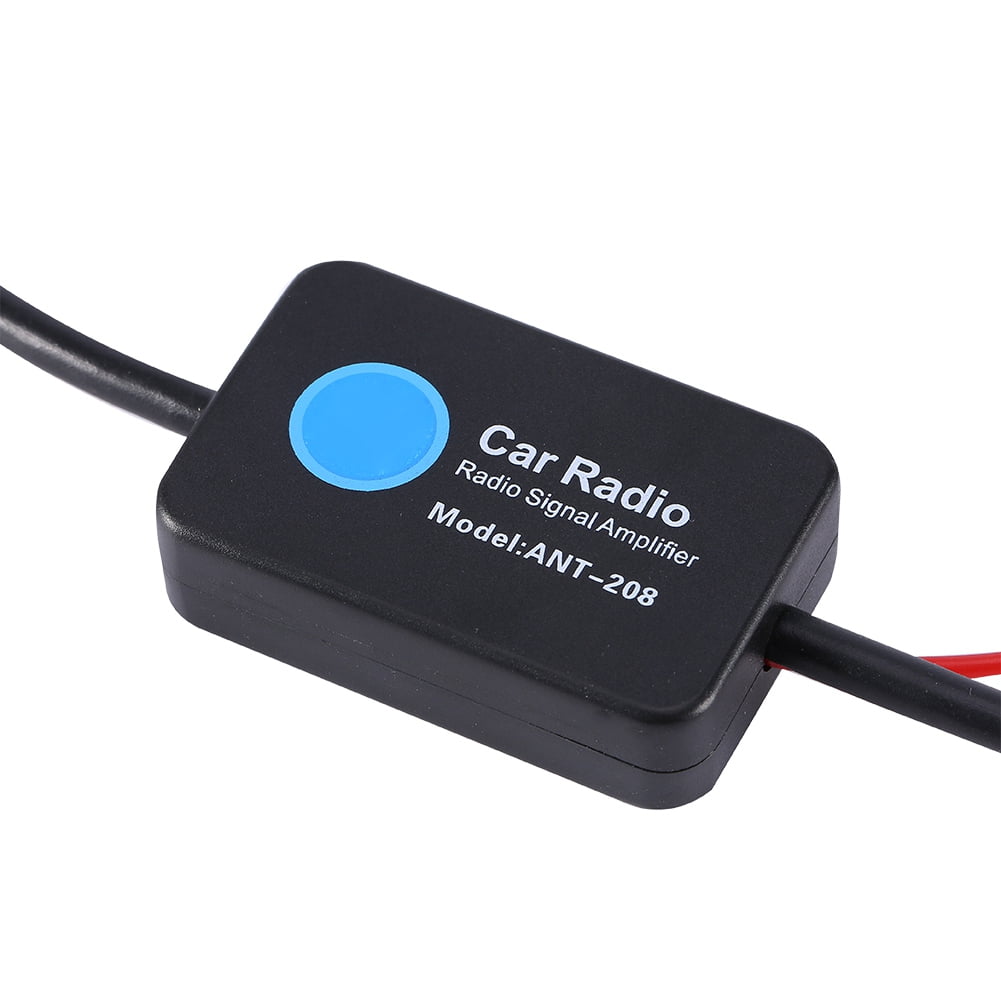

The Pantsir-S1 air-defence missile-gun system was adopted for service with the Russian Ground Forces in November 2012.
Car radio antenna booster series#
Final test series prior to delivery in May 2007 at Kapustin Yar included a forced march of 250 km (160 mi) to an unprepared launch position simulating the accomplishing of a typical air-defence mission. Live firing tests took place in June 2006 at the Kapustin Yar firing range, Astrakhan Region, Russia. The system has enhanced missiles (from type 57E6 to type 57E6-E probably interchangeable) and guns (from type 2A72 to type 2A38M). Due to the new technologies adopted, the overall volume of the weapon station is reduced by a third while the overall weight is reduced by half. Single operator operation can be achieved when needed. A new central computer system greatly decreased the reaction time. Within the cabin two new LCD multi-function displays have replaced the multiple CRT display.

The system has two new radars with increased range, capable of tracking more air targets but also land targets. This resulted in a complete re-design of both the turret and radar systems and the removal of any older Tunguska equipment. However, KBP continued development of the program using its own funds.

The program soon ran into difficulties which resulted in a halt in funding. A prototype was completed in 1994 and displayed at the MAKS-1995.

ĭevelopment as the Pantsir-S started in 1990 as a planned successor to the Tunguska M1. It was decided that a wheeled chassis would be better suited for the Pantsir-S rather than a tracked chassis, on grounds that wheeled vehicles are faster, less prone to breakdowns, easier to maintain, and cheaper to produce. One of the roles for the Pantsir-S is to provide air defence to the S-300 missile systems. However, once the S-300 unit was found by enemy forces it was still very vulnerable to attack. Newer systems such as the S-300PS/PM (SA-10/20) were much more mobile which reduced vulnerabilities to attack. Originally Soviet strategic missile systems had been placed in fixed, hardened sites. Development Īn alternative mounting of anti-aircraft complex Pantsir-S1 on a tracked GM-352 chassis The S-400 Triumf and Pantsir missile system can be integrated into a two-layer defense system. The interval between missile launches is 1–1.5 seconds (a world record for analogue systems). Īfter receiving target coordinates (from any source) it may engage the target (using all the radar except the early detection radar) within a range from −5 to +85 (82 ) degrees (vertical). The system has a modular structure which enables a fast and easy replacement of any part. In 2013, there was a variant with two radar stations for early detection * standing back to back *. This is not confirmed by comparative testing, but clearly follows from the declared limit of possibilities of systems (2010). The system is claimed to have significant advantages over other systems, such as Crotale NG (France), Roland-3 (France + Germany), Rapier 2000 (UK), SeaRAM (Germany + USA). įor its main radar station, early detection in height may be between 0–60° or 26–82° depending on the mode. It can fire missiles and gun armament while in motion. The probability of hitting a target for one missile is not less than 0.7 with a reaction time of 4–6 seconds. It has the ability to work in a completely passive mode. It can operate in a fully automatic mode. It can hit targets on the waterline/above-water. The system has capability for anti-munitions missions. Its purpose is the protection of civil and military point and area targets, for motorised or mechanised troops up to regimental size or as defensive asset of higher ranking air defence systems like S-300/ S-400. Its air defense consists of automatic anti-aircraft guns and surface-to-air missiles with radar or optical target-tracking and radio-command guidance. It is a short to medium range ground-based air defence system, wheeled, tracked or stationary with two to three operators. The first finished version was completed in 1995 with the 1元6 radar, later another was designed.


 0 kommentar(er)
0 kommentar(er)
